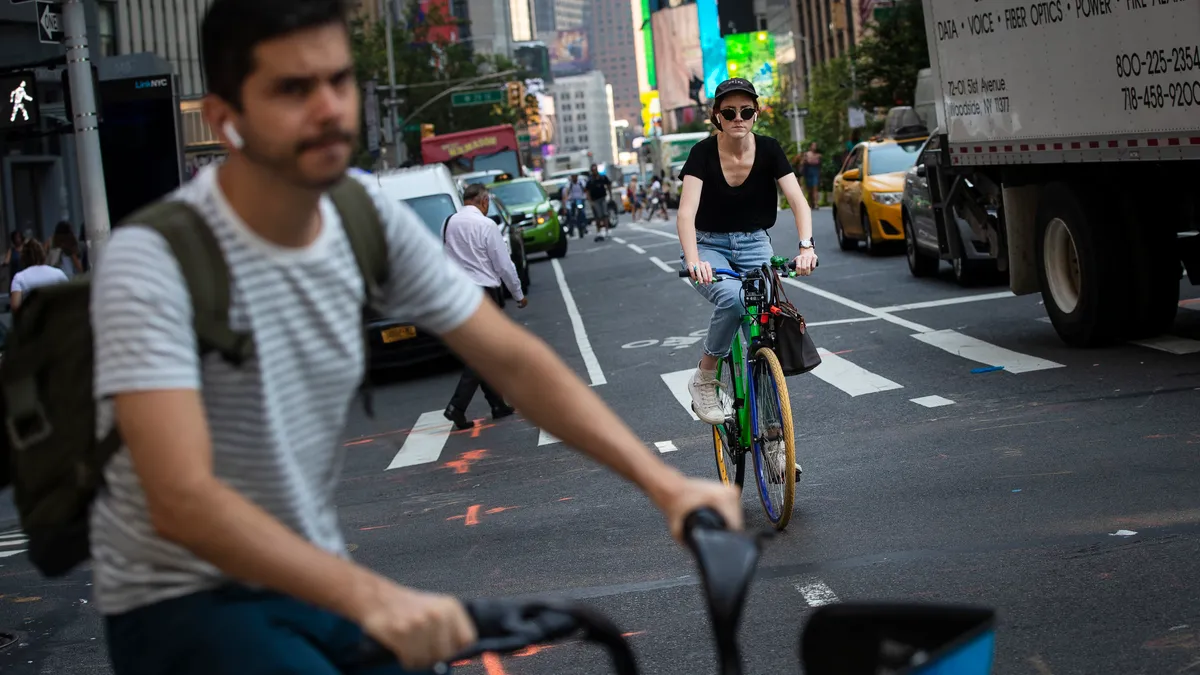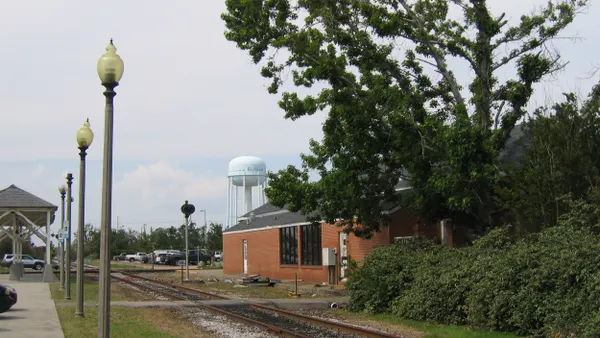It’s been a tumultuous year for New York City streets. Local residents have experienced major traffic congestion, deadly flooding from Hurricane Ida, pandemic-fueled changes to street designs, and the deadliest year for traffic deaths since Vision Zero goals were originally established in 2014 to improve street safety.
The Regional Plan Association (RPA), a non-profit group that advocates and plans for a more resilient New York metropolitan area, released a report Wednesday calling for a "wholesale transformation" of New York City streets in response to these many challenges. The proposed changes are designed to support storm preparedness, economic development, transportation alternatives and the movement of goods.
The Re-Envisioning the Right-of-Way report, according to the RPA, calls for a rethink of the public right-of-way as a "network of three interconnected systems that can work together to improve quality of life." Those three systems include: transportation systems like bike lanes and busways, social systems like open streets to support economic opportunities and natural systems like community gardens to manage water and heat.
"Above all, city officials and residents will need to embrace the growing shift in philosophy that streets are meant for autos only. Once we see what streets can be, we will be able to do so much more with them that benefit people in ways that are equitable and sustainable," said Robert Freudenberg, vice president of energy and environment at RPA, in an email interview.
Five key recommendations from the report for the incoming mayoral administration and city council to consider include:
- Expand green infrastructure to collect stormwater: Rain gardens, enhanced tree pits or bioswales can enhance city streets to support water management, according to the report. Streets should also be designed to contain — not just drain — water particularly as more severe storms continue. "If we allow water to collect and pool in the streets, we can prevent more significant flooding downstream," the report writes.
- Eliminate free parking on streets, using revenue for "right-of-way transformations:" Parked vehicles represent the biggest obstacle to achieving the goals set out in the report, RPA describes. With the addition of metered zones throughout the city, street meter funds and violation fines could be allocated to a traffic improvement fund. Adding such demand-based metered parking to 780,000 spaces could result in at least $1 billion annually, according to a report from Transportation Alternatives.
- Add dedicated bus lanes and busways: The report touts the city’s 14th street busway as a success story for showing how dedicating right-of-way to surface transit can help relieve congestion. The report recommends the city add new select bus service routes, while building light rail and streetcar lines.
- Build a "Five Borough Bikeway:" As city residents have embraced cycling during the pandemic, the RPA recommends a 425-mile network of protected and continuous bike lanes. The city recently took a step toward such a connected bikeway by adding a protected bike lane to the Brooklyn Bridge. The redesigned Brooklyn Bridge also contributes to the roughly 30 miles of bike lanes the city plans to add in 2021, the most bike lanes added by the city in any single year.
- Reposition the New York City Department of Transportation as the "NYC DOT and Public Space:" The report recommends that the agency add public spaces to its purview as "no other agency knows the city’s streets better." Adding that role to the agency is also with precedent according to the report, particularly following the agency's facilitation of the transition to make the city’s Open Restaurants Program permanent.
These projects will require leadership and political will from elected officials, Freudenberg said.
It will also require "an unprecedented emphasis on collaboration between city agencies, and funding, not just for capital projects, but for additional staff at the agency levels for engagement to reflect the individual needs of neighborhoods and maintenance of new facilities," he wrote. "We will also need to overhaul the way we construct projects on our streets — from bike lanes to green infrastructure — to ensure we can do it more quickly and without so much red tape, delays, and cost overruns."











